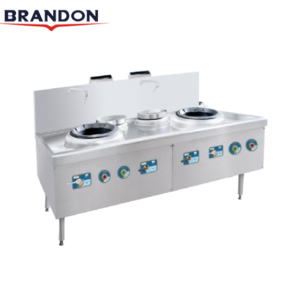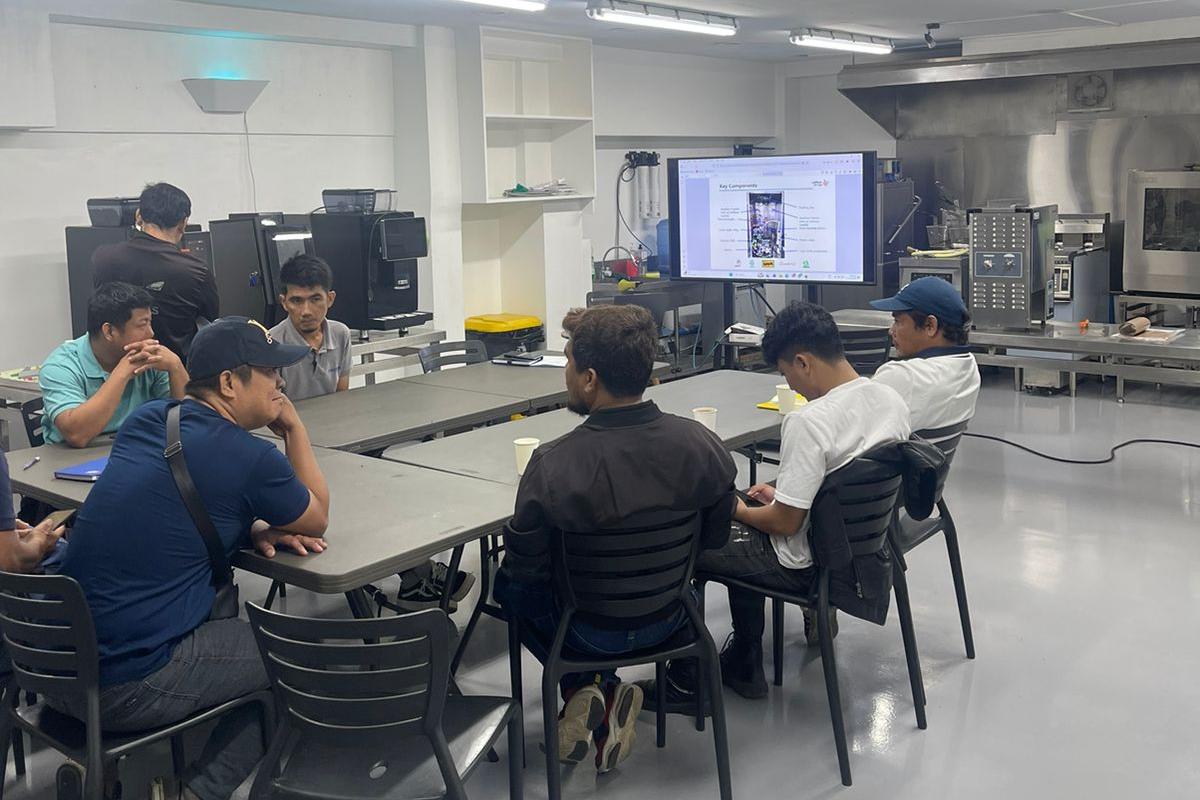BGW2-GS-1-Wok
Features
● Environmental protection concept features
The small fire is equipped with anti-strong airflow and
anti- strong wind technology, which can ensure that is
will not be extinguished in a closed combustion chamber
or frequently toss the pot
● High efficiency, low noise and low exhaust gas
The high-quality, revolving fire per-mixed burner can save
more than 40% of energy than the traditional, with a noise
of less than 70 decibels, and carbon monoxide (exhaust gas)
less than 0.05%
● Simple operation and safety protection
Independent fan, independent air inlet, simple operation,
all –round protection to prevent gas leakage
● 13.5” cast iron ring
● Water Inlet:DN15
● Gas inlet: DN25
● Drain outlet: DN40
Description
Gas fired environment-friendly large pot stove
| Model | No. of Rear Pot | Dimensions (mm) | Gas power | Fried wok size |
|---|---|---|---|---|
| BGW1-LP | Φ 800 | 1200 x 1200 x (810 + 440) | 95600 btu/h (28 kW) | 850 (33 1/2”) |
| BGW2-LP | Φ 800 | 2150 x 1200 x (810 + 440) | 95600 btu/h (28 kW) x 2 | 850 (33 1/2”) |
| BGW1-LPB | Φ 900 | 1200 x 1250 x (810 + 440) | 95600 btu/h (28 kW) | 950 (37 1/2”) |
| BGW2-LPB | Φ 900 | 2150 x 1250 x (810 + 440) | 95600 btu/h (28 kW) x 2 | 950 (37 1/2”) |

Gas fired environmentally-friendly steamer
| Model | Fit steam tray Diameter (mm) | Dimensions (mm) | Gas power |
|---|---|---|---|
| BGW1-KS | Φ 540 | 900 x 1050 x (810 + 440) | 95600 + 17100 btu (28 + 5 kW) |
| BGW2-KS | Φ 540 | 1800 x 1050 x (810 + 440) | 95600 + 17100 btu (28 + 5 kW) x 2 |

Gas fired environmentally-friendly soup cooker
| Model | No. of Rear Pot | Dimensions (mm) | Gas power | Capacity Liter |
|---|---|---|---|---|
| BGW1-SK | 2 / 1 | 1200 x 1250 x (810 + 440) | 95600 btu/h (28 kW) x 2 + 47800 btu/h (14 kW) |
280 |






